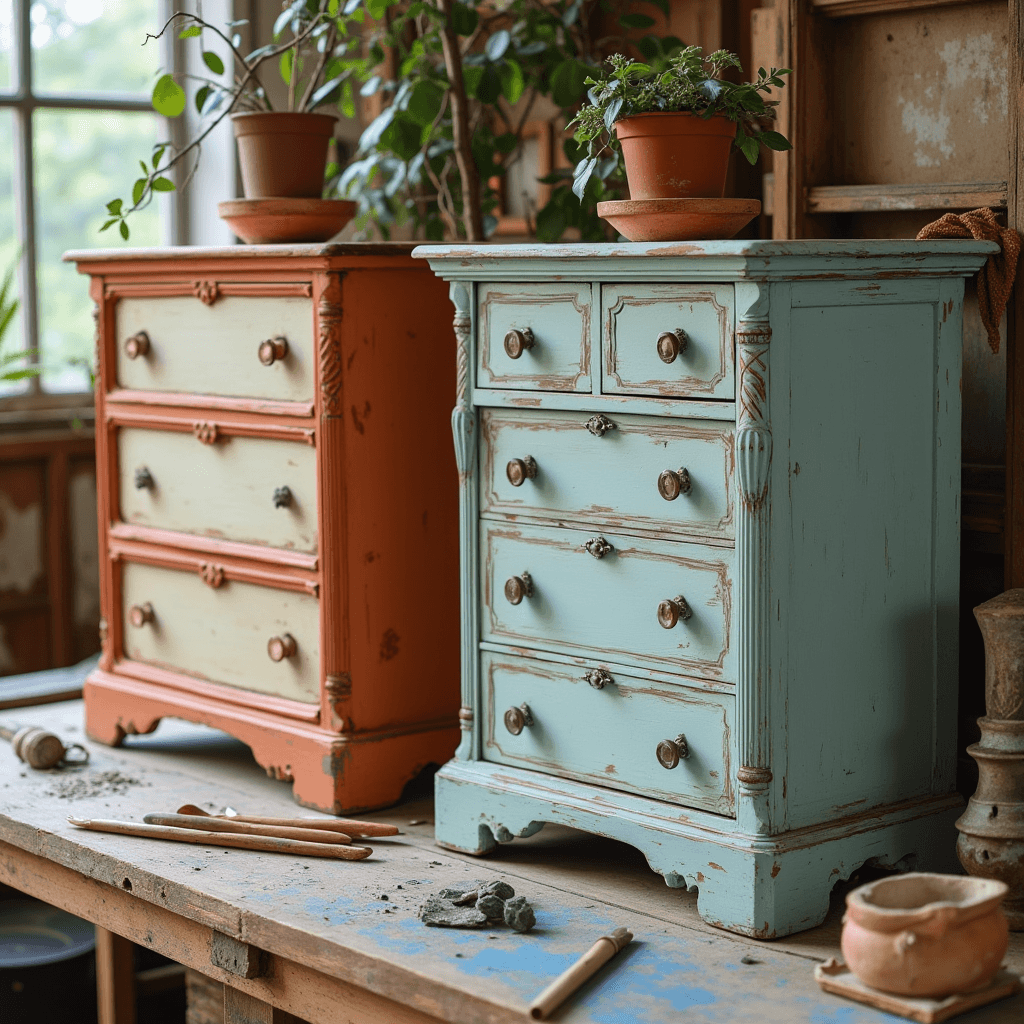Upcycle Old Furniture: Creative & Budget-Friendly Ideas
Are you tired of looking at your old, outdated furniture? Don’t throw it away just yet! Upcycling is the perfect way to give your furniture new life and add a unique touch to your home decor. Not only is it a budget-friendly option, but it also allows you to unleash your creativity and create one-of-a-kind pieces that reflect your personal style. In this article, we will explore some creative and inspiring ideas to upcycle your old furniture and transform it into something truly special.
Materials/Tools Required
Before diving into the exciting world of furniture transformation, it’s important to gather the necessary materials and tools. Here’s a list of essentials you’ll need:
1. Sandpaper
Sanding is an essential step in preparing your furniture for upcycling. It helps to remove any existing finishes, smooth out rough surfaces, and create a clean canvas for your creative endeavors.
2. Paint and Brushes
A fresh coat of paint can do wonders for transforming furniture. Choose a high-quality paint suitable for the material of your furniture, whether it’s wood, metal, or plastic. Don’t forget to grab some brushes or rollers for an even application.
3. Decorative Knobs or Handles
Swapping out the knobs or handles on your furniture can instantly give it a new look. Explore different styles and materials to find the perfect match for your upcycling project.
4. Upholstery Fabric
If you’re planning to upcycle a piece of upholstered furniture, you’ll need fabric to reupholster it. Choose a fabric that complements your overall design scheme and consider durability for long-lasting results.

Step-by-Step Instructions
Now that you have all the necessary materials, let’s dive into the step-by-step process of upcycling your old furniture:
1. Assess and Clean
Start by assessing the condition of your furniture. Identify any repairs that need to be made, such as loose joints or broken parts. Once you’ve made the necessary fixes, give your furniture a thorough cleaning to remove any dirt or grime.
2. Decide on a Design
Before you start painting or making any changes, decide on the design you want to achieve. Browse through magazines, websites, or social media platforms for inspiration. Create a mood board or sketch out your ideas to visualize the final result.
3. Sand and Prime
Using sandpaper, gently sand the surface of your furniture to create a smooth and even texture. This step helps the paint adhere better. After sanding, apply a primer to create a solid base for your paint color.
4. Paint and Stain
Now it’s time to bring color to your furniture! Apply your chosen paint color evenly, using a brush or roller. For a distressed or vintage look, consider using a stain instead. Experiment with different techniques, such as layering colors or creating an ombre effect.
5. Add Personal Touches
Make your upcycled furniture truly unique by adding personal touches. Consider stenciling patterns, adding decoupage elements, or hand-painting designs. Let your imagination run wild and have fun with the process!
Variations/Alternative Approaches
While painting is a popular choice for upcycling furniture, there are plenty of alternative approaches to explore. Here are a few creative variations:
1. Decoupage
Instead of painting, try decoupaging your furniture. Choose decorative paper or fabric and adhere it to the surface using decoupage glue. This technique adds texture and visual interest to your pieces.
2. Reupholstering
If you have a piece of furniture with worn-out upholstery, consider reupholstering it. Remove the old fabric and replace it with a fresh, stylish option. This is a great way to give new life to old chairs, sofas, or ottomans.
3. Mosaic or Tile Accents
Add a touch of elegance to your furniture by incorporating mosaic or tile accents. Create a mosaic tabletop or add tile details to the sides of a dresser. This technique adds a unique and eye-catching element to your upcycled piece.
Common Mistakes to Avoid
While upcycling furniture can be a rewarding experience, it’s important to be aware of some common mistakes to avoid:
1. Skipping the Prep Work
Proper preparation is key to achieving a professional-looking finish. Don’t skip steps like sanding, priming, or repairing any damage. These steps ensure that your upcycled furniture lasts and looks great.
2. Using the Wrong Paint
Choosing the wrong paint can lead to disappointing results. Make sure to select a paint specifically designed for the material of your furniture. Research the best options for wood, metal, plastic, or upholstered surfaces.
3. Overcomplicating the Design
While it’s tempting to go all out with intricate designs and patterns, sometimes simplicity is key. Overcomplicating the design can result in a cluttered and overwhelming look. Stick to a cohesive theme and let the beauty of the furniture shine through.
Tips and Tricks
Here are some additional tips and tricks to make your furniture upcycling journey even more successful:
1. Start with Small Projects
If you’re new to upcycling, start with small projects to gain confidence and practice your skills. A side table or a chair can be a great starting point before tackling larger pieces.
2. Experiment with Colors and Finishes
Don’t be afraid to experiment with different paint colors and finishes. Create a statement piece by using bold colors or achieve a vintage look with distressed finishes. The possibilities are endless!
3. Mix and Match
Don’t limit yourself to one style or era. Mix and match different furniture pieces to create an eclectic and personalized space. Combining modern and vintage elements adds character and charm to your home.
Conclusion
Upcycling old furniture is a fantastic way to breathe new life into your home decor. With a little creativity and some basic materials, you can transform outdated pieces into stylish and unique furniture that reflects your personal style. Whether you choose to paint, decoupage, or reupholster, the possibilities are endless. Embrace the process, enjoy the journey, and let your imagination run wild. Get started today and discover the joy of upcycling!
FAQs
1. Can I upcycle furniture without any prior experience?
Absolutely! Upcycling furniture doesn’t require any special skills. It’s all about unleashing your creativity and enjoying the process. Start with small projects and gradually build your confidence. There are numerous tutorials and resources available online to guide you along the way.
2. How long does it take to upcycle furniture?
The time it takes to upcycle furniture depends on the complexity of the project and the techniques you choose. Simple painting projects can be completed in a day, while more intricate designs may require several days or even weeks. Patience and planning are key to achieving the desired results.
3. Where can I find old furniture for upcycling?
There are several places to find old furniture for upcycling. Check thrift stores, yard sales, flea markets, or online platforms like Craigslist or Facebook Marketplace. Keep an open mind and be prepared to see the potential in pieces that others might overlook.

